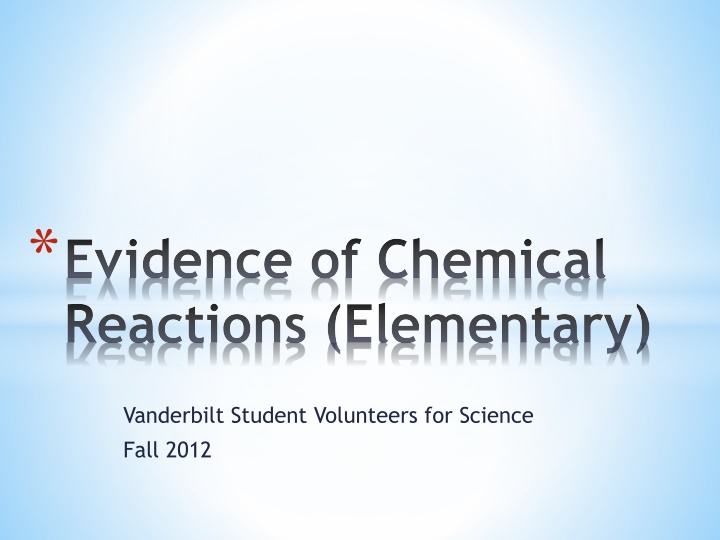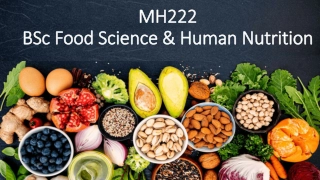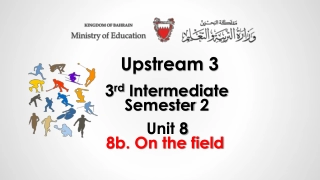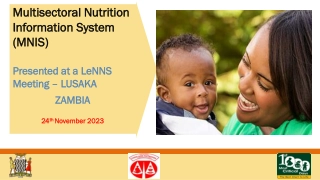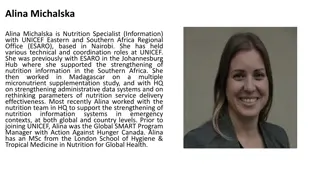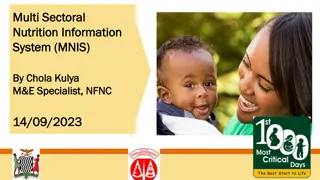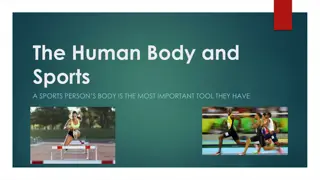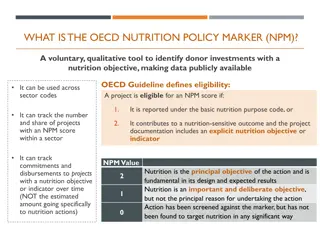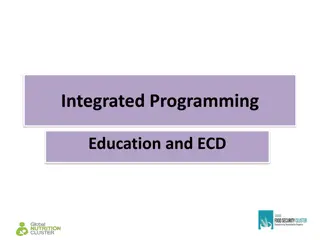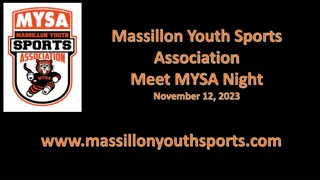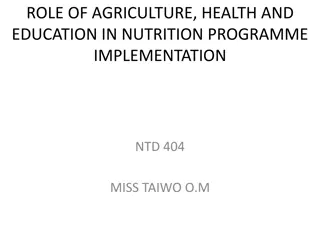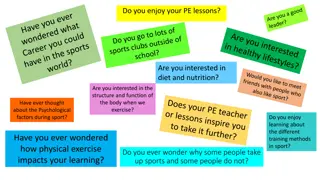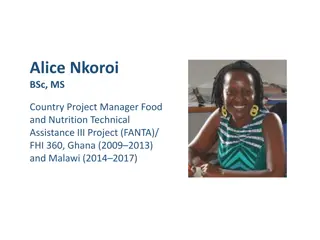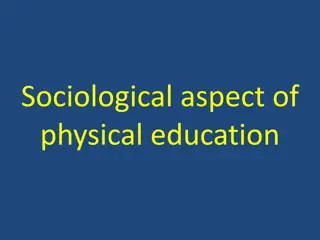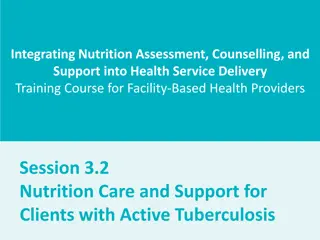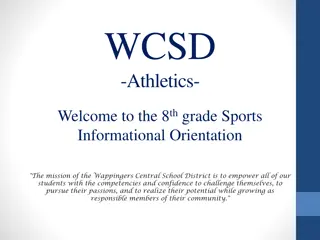Sports Nutrition with Rachel McGarry-Cernak
Rachel McGarry-Cernak, a qualified nutritionist, educates athletes and coaches about sports nutrition at various colleges in NY. She provides individual and team counseling on menu planning, food choices, hydration, and overall health improvement. Her focus is on optimizing performance through proper nutrition, emphasizing the importance of regular eating habits, diverse food choices, and adequate hydration. Rachel highlights key nutrients like calcium and iron for strength and exercise performance.
Download Presentation

Please find below an Image/Link to download the presentation.
The content on the website is provided AS IS for your information and personal use only. It may not be sold, licensed, or shared on other websites without obtaining consent from the author.If you encounter any issues during the download, it is possible that the publisher has removed the file from their server.
You are allowed to download the files provided on this website for personal or commercial use, subject to the condition that they are used lawfully. All files are the property of their respective owners.
The content on the website is provided AS IS for your information and personal use only. It may not be sold, licensed, or shared on other websites without obtaining consent from the author.
E N D
Presentation Transcript
*Evidence of Chemical Reactions (Elementary) Vanderbilt Student Volunteers for Science Fall 2012
*What is a physical change? - A physical change does not change the properties of a substance. No new substance is formed during a physical change. -Examples of a physical change include changes in shape, size, or shape of matter. *Introduction
*What is a chemical change? - A chemical change starts with one kind of matter and after the reaction, it becomes a different kind of matter. *Introduction (cont.)
1. A color change 2. A gas given off (it may smell) 3. The formation of a precipitate (a new solid) 4. An energy (temperature, light) change *Other evidence of chemical changes
*After reviewing safety rules, split students into groups of two *Pass out the test tube holders, a set of test tubes (A, B, C, D), and plates *Experiments
1. Add 1 oz water to test tube 2. Have students record feeling of test tube temp. 3. Add three taster-spoons of calcium chloride (CaCl2) 4. Cap and shake tube 5. Feel the tube again and record new observations *Experiment 1A
1. Pass lightsticks out to pairs 2. Ask the teacher if it is fine to turn out the lights; if it is not, continue with lights on 3. Bend the tube to break the inner vial 4. Shake the lightstick 5. Explain to students what is happening *Experiment 1B
1. Add ONE mini-spoonful of baking soda to Test Tube B 2. Add the 1 oz of vinegar from the 1 oz cup 3. Record observations *Experiment 2
*Experiment 3 1. Add starch to Test Tube C 2. Add a squirt of iodine 3. Cap the tube and invert it 4. Record any observations
*Experiment 4 1. Add calcium chloride (CaCl2) to Test Tube D 2. Ask students if the solution is clear of cloudy 3. Slowly add drops of sodium carbonate solution 4. Record observations
*What happened in the test tubes? *What is the difference between physical and chemical change? *What type of evidence did you observe in the experiments for chemical reactions? *Results & Review
